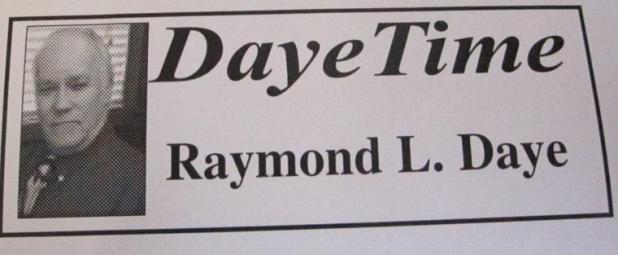
DayeTime: The story behind pow wows
This weekend the Tunica-Biloxi will hold their annual Pow Wow, with all the pomp, ceremony, color and competitions that go with it.
While researching an article on this Native American event, I came across some interesting facts behind the ceremony. It seems the history of Native American ceremonial dancing events has a lot of pain mixed with its joy.
Today we see the Pow Wow as an opportunity for Native Americans to share their culture and for non-Native Americans to learn more about the nation’s original inhabitants. In a bygone era, the tribal dances were considered politically subversive, indecent and a threat to Christianity.
Perhaps the most famous dance-related tragedy occurred in December 1890.
Legendary Sioux Chief Sitting Bull was killed by Pine Ridge Reservation Police on Dec. 15, 1890 when they tried to arrest him for being a leader of the “Ghost Dance” movement, which taught that the Great Spirit would restore the Indians to their former lives and destroy their non-Indian enemies if the tribes would return to their traditions and forsake the white man’s ways.
Of course, a mission statement like that did not go over well in Washington, and there were conflicts.
Sitting Bull was actually not involved in the Ghost Dance movement. He was falsely accused, either accidentally or intentionally. His death triggered a reaction among Native Americans in the area and on the reservation.
In response, the U.S. 7th Cavalry -- the unit led by George Custer and defeated by Sitting Bull at Little Big Horn in 1876 -- surrounded a group of Ghost Dancers at Wounded Knee, S.D., near the Pine Ridge Reservation, on Dec. 29.
The troopers demanded Sioux Chief Big Foot’s band surrender their weapons.
Reports say a cavalryman and an Indian got into a fight, someone fired a shot and the rest, as they say, is history.
After the melee was over and the smoke cleared, 150-300 Native Americans and 15 soldiers were killed in what some called a battle and many called a massacre.
In a nation that prides itself on its adherence to “freedom of religion” -- and in more modern times, it seems, the “freedom from religion” -- the attitude toward Native Americans’ traditions and religious beliefs was, well, less than tolerant.
The Religious Crimes Code of 1883 gave Indian Agency superintendents authority to use force or imprisonment to stop practices they felt were immoral, subversive or counter to the government’s assimilation policies for the tribes.
Charles Burke, the commissioner of Indian Affairs from 1921-1929, was a leading proponent of the effort to assimilate Native American tribes into society and to eliminate their traditions. He threatened to take action if Native American dancing was not curtailed.
Many tribes defied the federal laws and held their gatherings in secret places.
Burke issued his infamous “Circular 1665” letter to the agency superintendents on April 26, 1921 and had legislation passed in 1923 that restricted when Native Americans could hold their dances.
Burke began Circular 1665 by saying, “An examination of the latest reports of superintendents on the subject of Indian dances reveals encouraging conditions, indicating that they are growing less frequent, are of shorter duration, interfere less with the Indian's farming and domestic affairs, and have fewer barbaric features; that they are also generally more orderly because better supervised than formerly.
“On a number of reservations, however, the native dance still has enough evil tendencies to furnish a retarding influence and at times a troublesome situation which calls for careful consideration and right-minded efforts.”
Burke said the government was not denouncing “all forms of Indian dancing.”
He conceded that dances are good for “pleasure and relaxation” and dance is “recognized as a manifestation of something inherent in human nature, widely evidenced by both sacred and profane history, and as a medium through which elevated minds may happily unite art, refinement and healthful exercise.”
However, Burke called some Native American dances “primitive and pagan.”
He said the Indian Agency superintendents were to control those events “by educational processes as far as possible, but if necessary, by punitive measures when its degrading tendencies persist.”
In 1923, he sent his superintendents a list of recommendations from an interdenominational meeting of Christian missionaries concerning Native American dance events.
Among those recommendations was that “none take part in the dances or be present who are under 50 years of age.”
That one was a bit excessive even for Burke, who wrote, “I would not exclude those under 50 if the occasion is properly controlled and unattended by immoral or degrading influence.”
Burke’s actions during the “Roaring ‘20s” didn’t have the results he wanted.
A group of reformers, intellectuals, artists and others rose up to support Native Americans’ right to preserve their heritage, eventually overcoming those who wanted to assimilate the tribes into American society.
While opponents of pow wows argued their threat to Christianity, those who supported the right of tribes to hold the events used the Constitution’s guarantee of religious freedom to bolster their case.
They agreed with the assimilationists and missionaries that the dances were, indeed, part of the Native American religious traditions and ceremonies.
However, they contended that rather than be a reason to ban the dances, it should be a reason to eliminate laws prohibiting or restricting that expression of religion.
By the late 1920s, a group that included two U.S. senators, a government attorney and Assistant Commissioner of Indian Affairs J. Henry Scattergood took part in the Navajo “Squaws Dance” with the tribe’s unmarried girls during an official visit to the Navajo Reservation.
In 1934, the assimilationists were finally defeated by the reformers when Congress adopted the Indian Reorganization Act -- which has been called the “Native American Magna Carta.”
